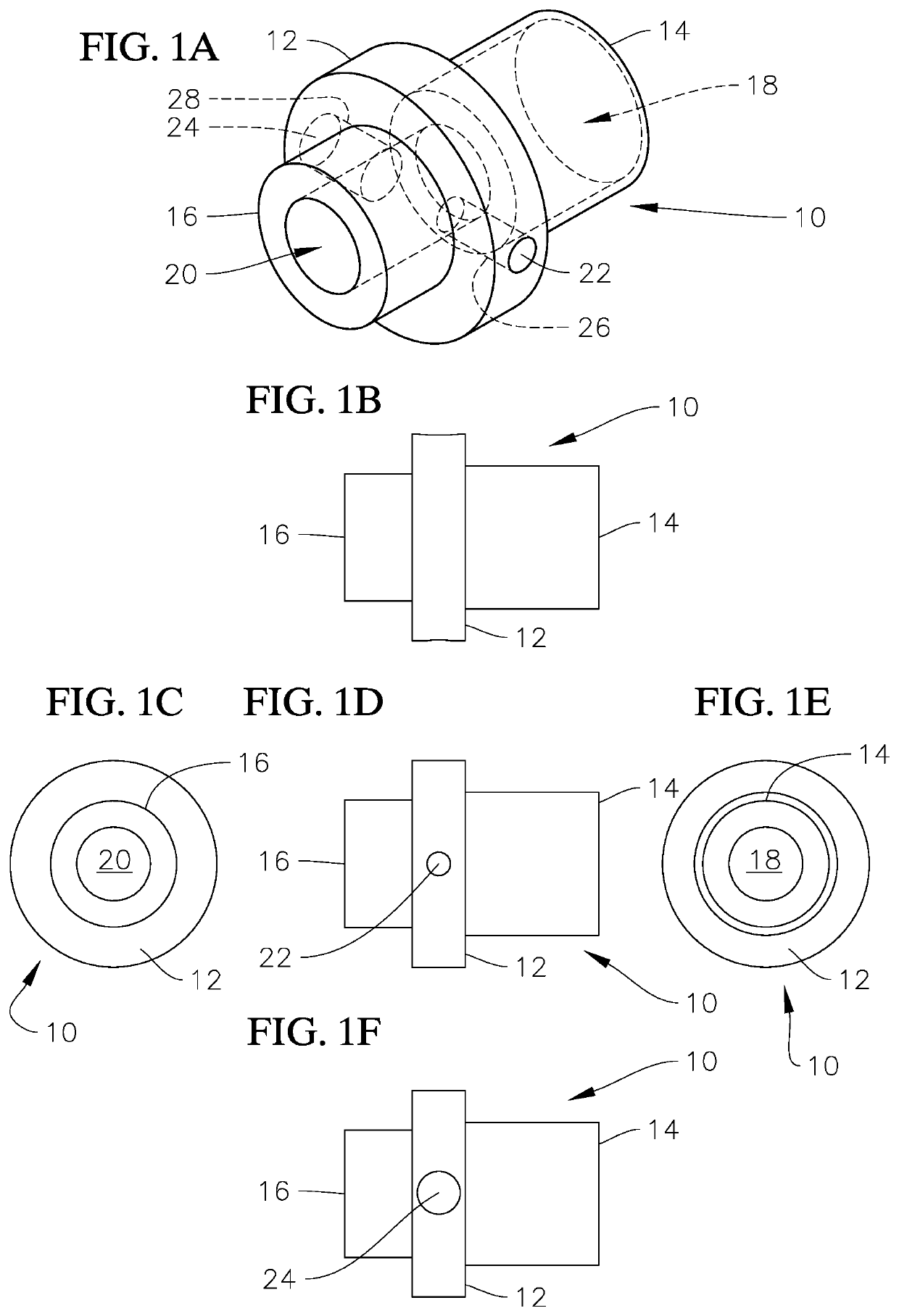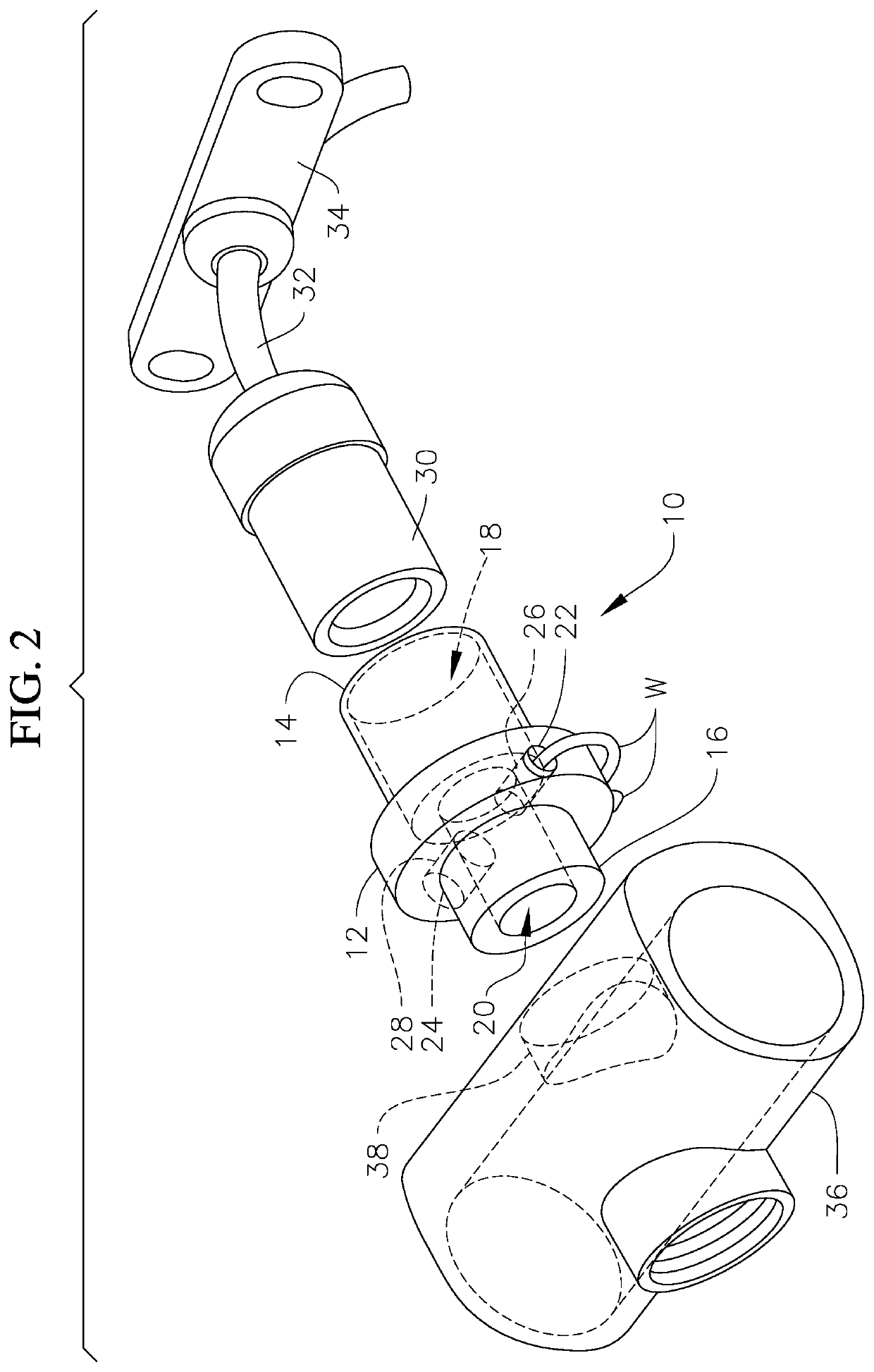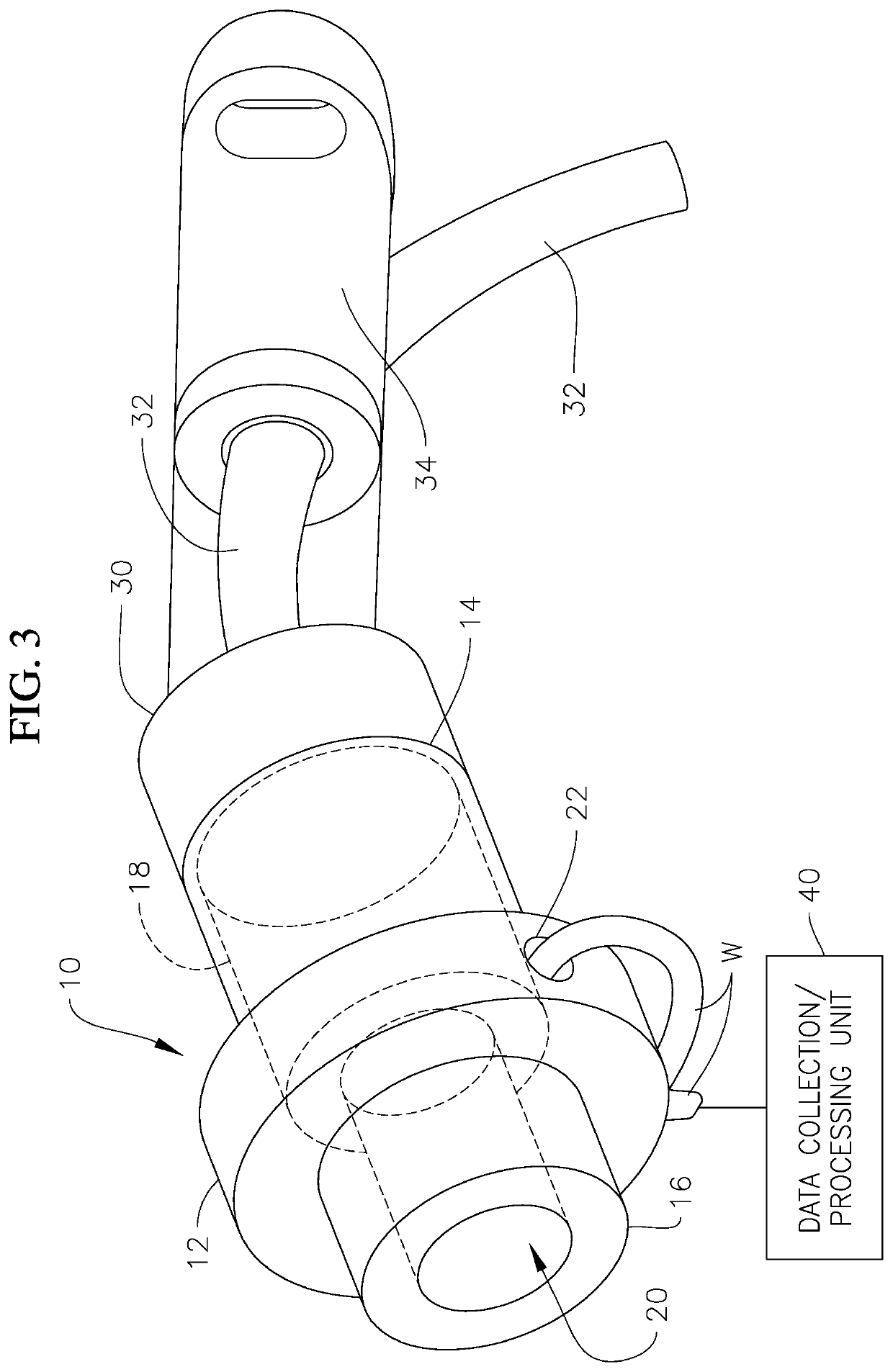System for monitoring tracheostomy airflow
a technology of tracheostomy and airflow, which is applied in the field of real-time sensing of breathing parameters, can solve the problems of prior devices not directly measuring exhalation, trachea can easily become obstructed, and experience complications, so as to prevent oxygen deprivation and improve life quality
- Summary
- Abstract
- Description
- Claims
- Application Information
AI Technical Summary
Benefits of technology
Problems solved by technology
Method used
Image
Examples
example 1
r Functionality
[0039]The use of the thermistor 22 in determining breath rates is based on thermodynamic principles which assume that air leaving the human body will be warmed to a value close to ‘normal’ body temperature, as a result of the energy exchange while the air passes through the respiratory system. The actual circuit analysis required to get the thermal values from raw sensor output uses electrical engineering principles. The temperature value will be determined using the Steinhart-Hart equation, as well as a Kelvin to Celsius conversion. The Steinhart-Hart equation models the value of the resistance in a semi-conductor (i.e., thermistor 22) at various temperatures C1, C2, C3 (in Kelvin):
Tk=1C1+C2(lnR)+C3(lnR)3.
Temperature in Celsius (Tc) can be converted to temperature in Kelvin (TK) with the formula TC=TK−273.15. From this, the breath rate of the patient can be obtained. The thermistor 22 will begin taking readings and continuously compare the readings to normal range va...
PUM
 Login to View More
Login to View More Abstract
Description
Claims
Application Information
 Login to View More
Login to View More - R&D
- Intellectual Property
- Life Sciences
- Materials
- Tech Scout
- Unparalleled Data Quality
- Higher Quality Content
- 60% Fewer Hallucinations
Browse by: Latest US Patents, China's latest patents, Technical Efficacy Thesaurus, Application Domain, Technology Topic, Popular Technical Reports.
© 2025 PatSnap. All rights reserved.Legal|Privacy policy|Modern Slavery Act Transparency Statement|Sitemap|About US| Contact US: help@patsnap.com



